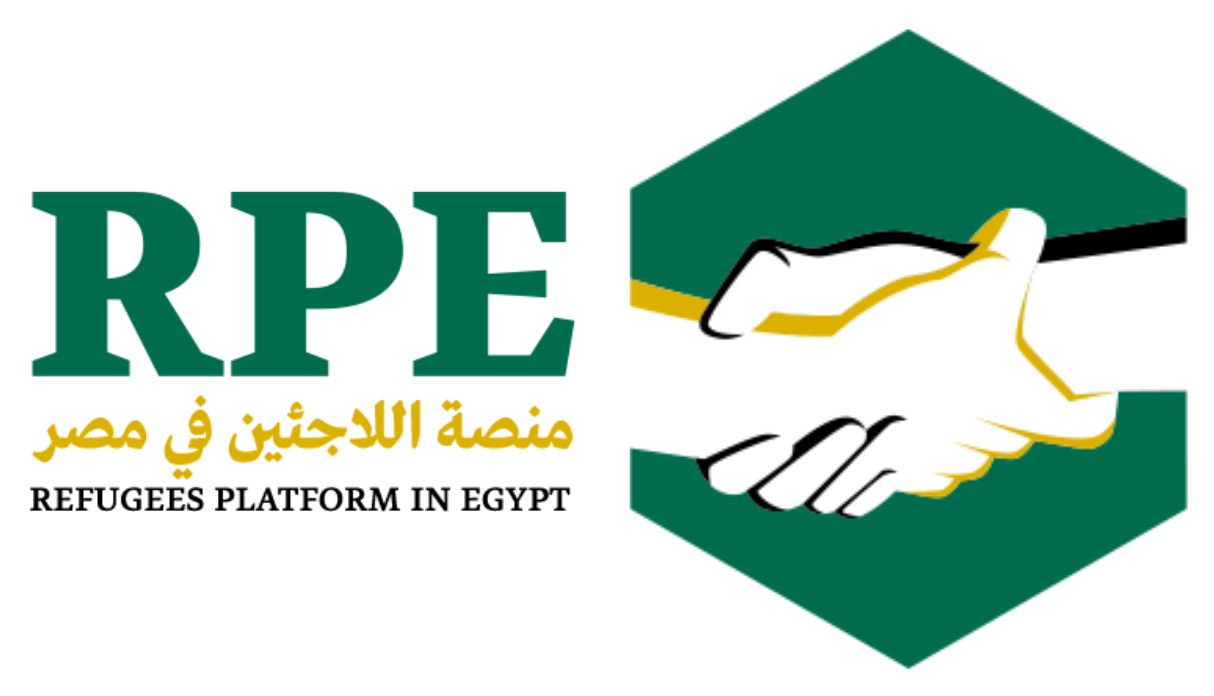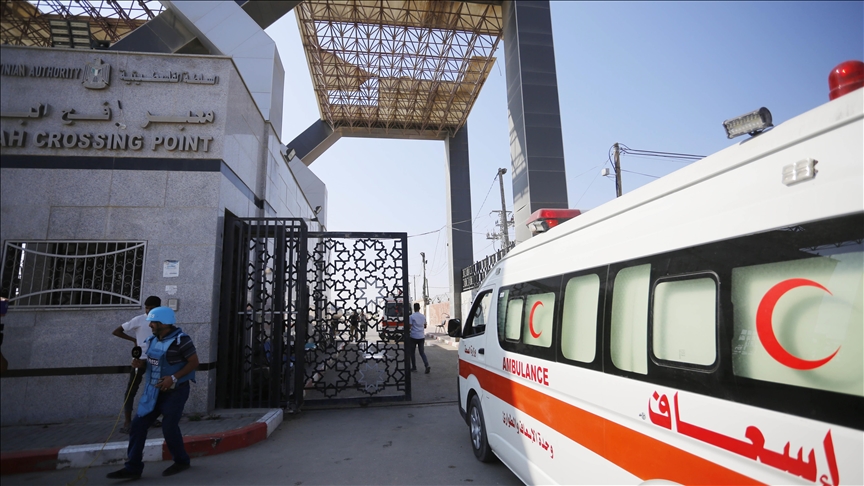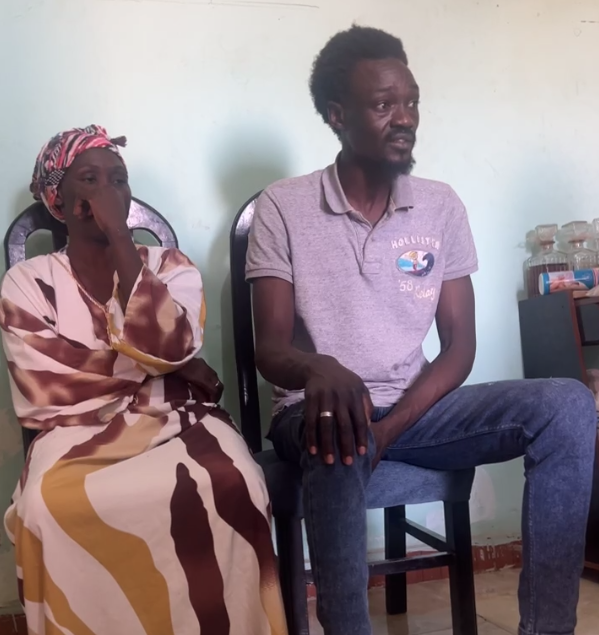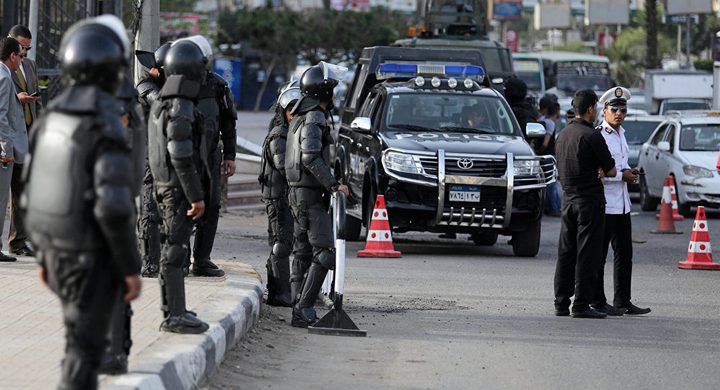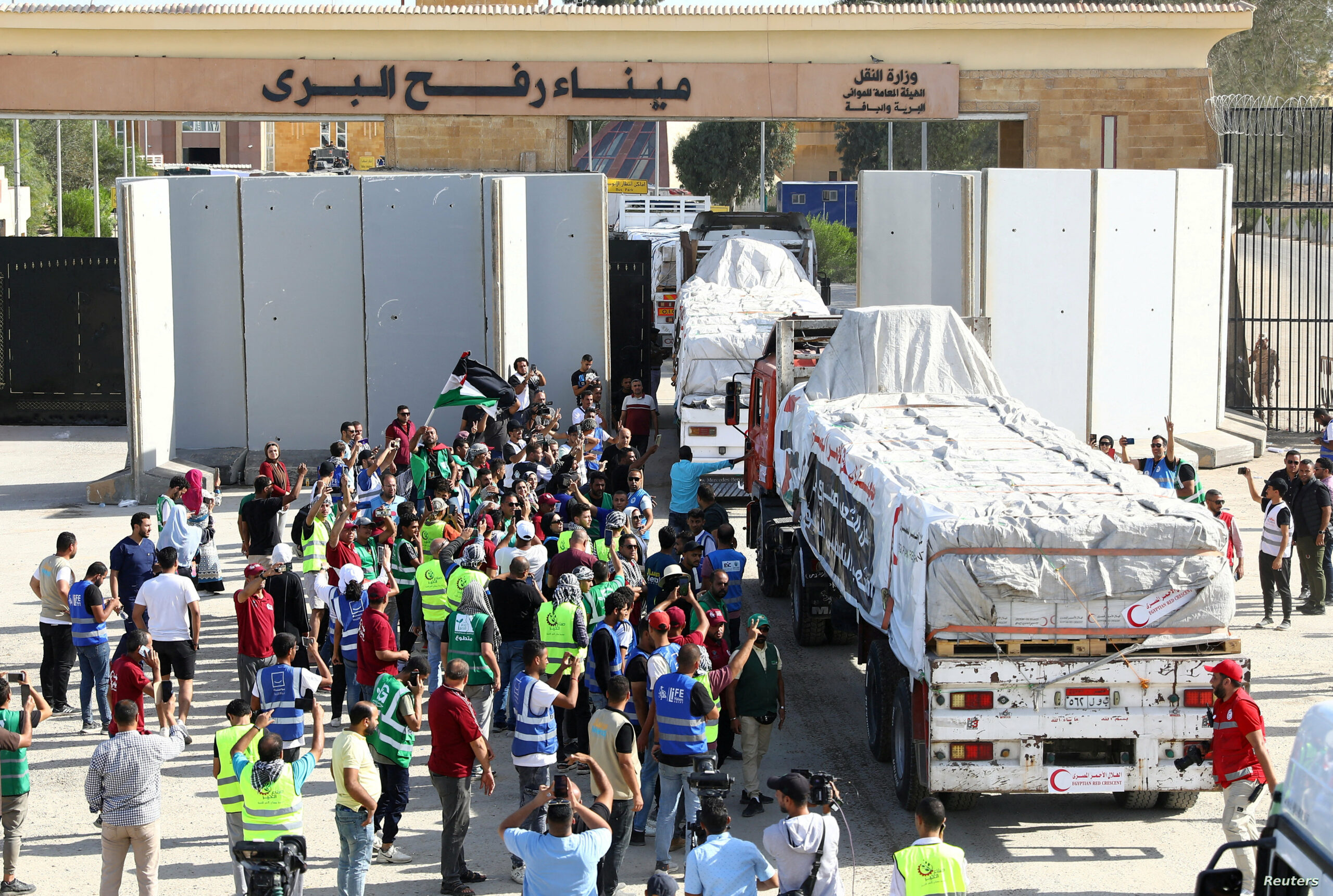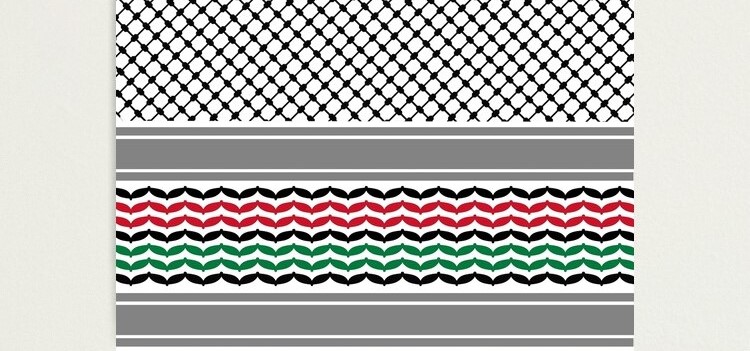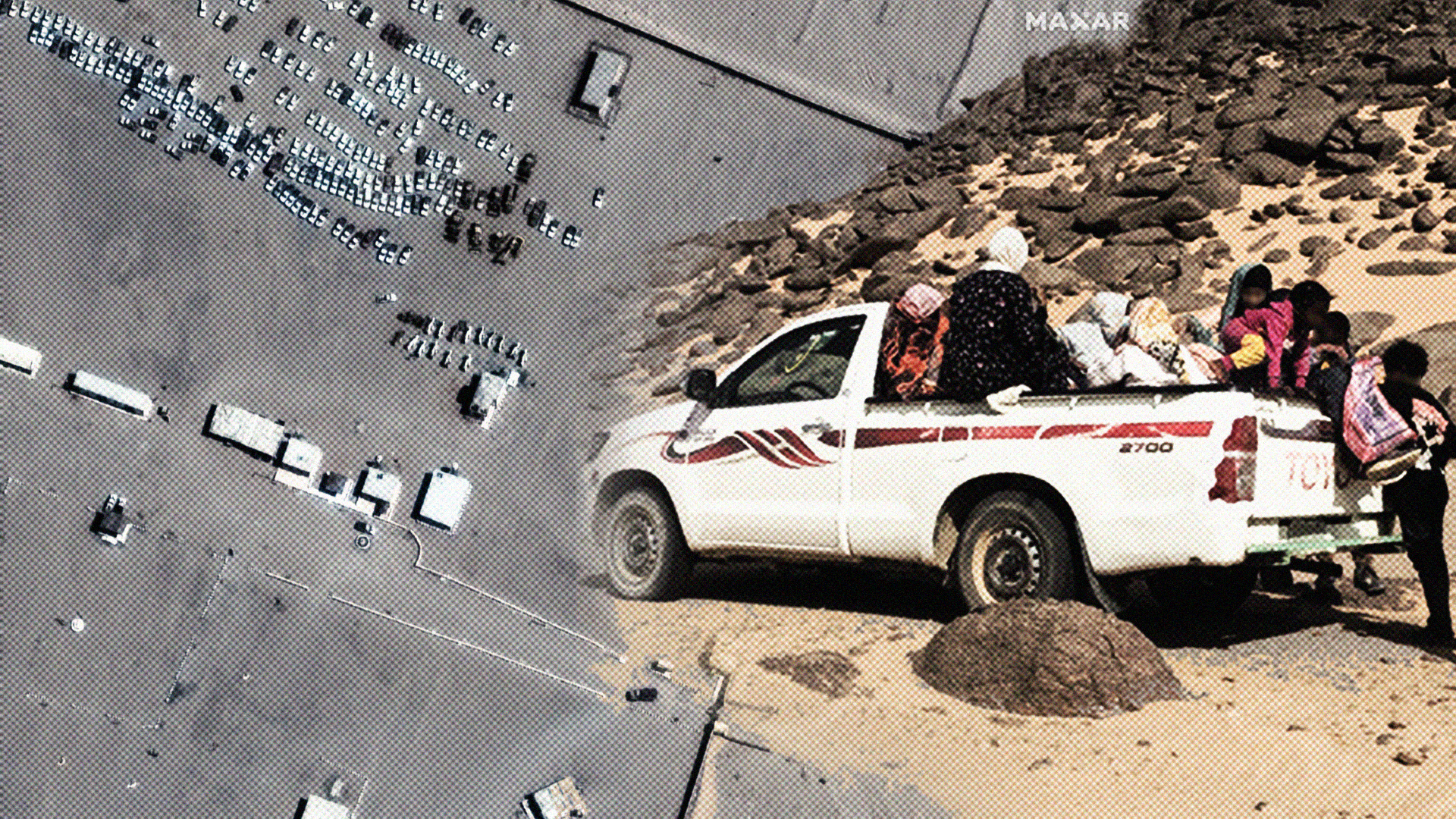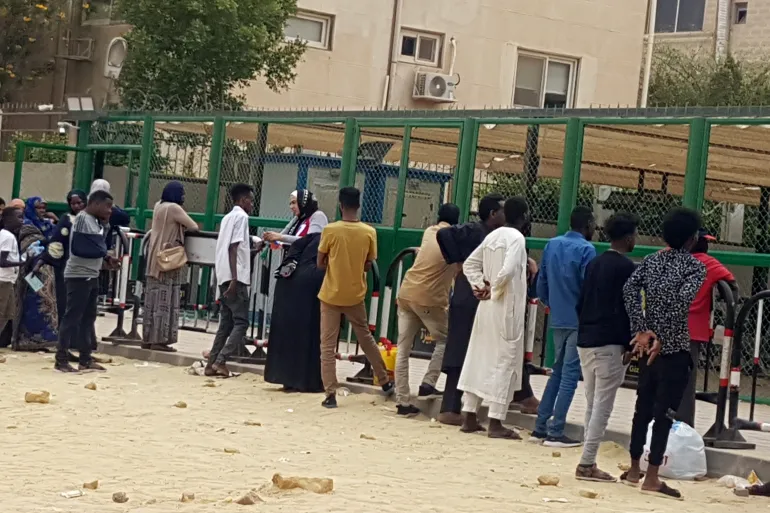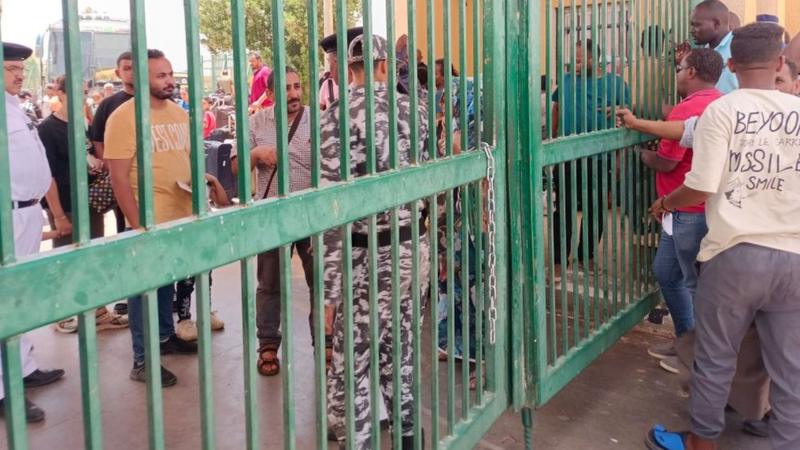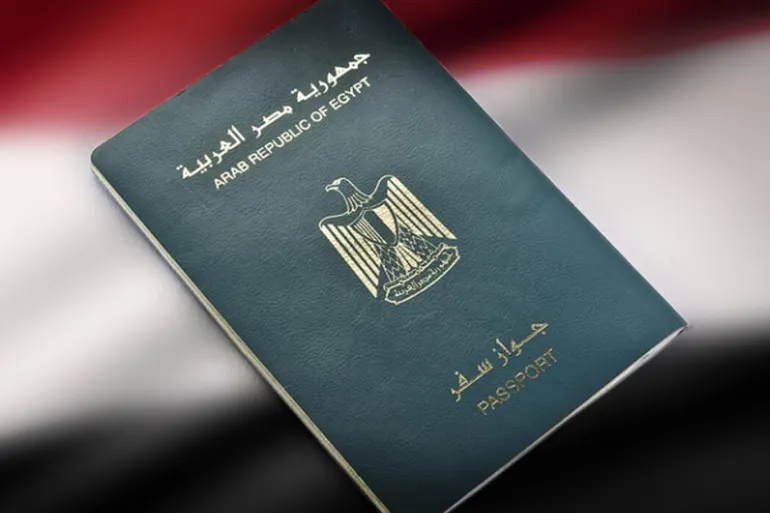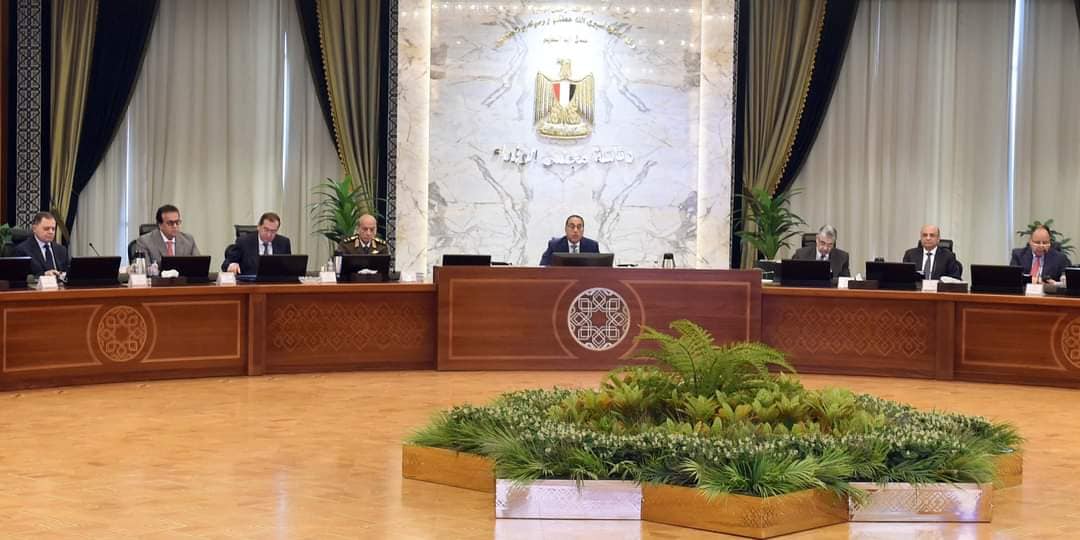The Condition of the Injured and Wounded from Gaza to Egypt… Caught Between the Collapse of the Healthcare System in the Strip and the Exploitation and Sluggishness of the “Security Coordination” and the Grip of Egyptian Authorities
This report provides an overview of the conditions of the wounded and injured from Gaza crossing to Egypt or through it to third countries between November 11, 2023, and February 1, 2024.
On January 14, 2024, Diaa Rashwan, the chairman of the Egyptian State Information Service (SIS), a governmental body responsible for liaising with foreign media and affiliated with the Egyptian presidency, announced that 1210 injured individuals from Gaza had arrived in Egypt following 100 days of the aggression, averaging 12 injured individuals per day. Meanwhile, the Palestinian Ministry of Health reported on January 11, 2024, that 707 injured individuals and 438 other patients had successfully traversed the Rafah crossing to receive treatment outside Gaza, facilitated by the Egyptian-Palestinian coordination mechanism. This mechanism coordinates the transit of patients and injured individuals through the Rafah crossing to receive treatment in Egypt or a third country.
On January 18, 2024, Dr. Ashraf Al-Qudra, the spokesperson for the Palestinian Ministry of Health in Gaza, stated that Israeli violations had led to the martyrdom of 337 health personnel and the detention of 99 of them, including hospital directors in northern Gaza. He also highlighted the deliberate Israeli targeting of 150 health facilities and 112 ambulances, resulting in 30 hospitals and 53 health centers going out of service. Meanwhile, the Ministry of Health has recorded over 8,000 cases of hepatitis A due to overcrowding and poor personal hygiene in displacement areas, which were being attended to solely by government medical teams. Additionally, it has anticipated a doubling of hepatitis A infections in various displacement locations in Gaza.
Furthermore, the Ministry documented hundreds of cases of miscarriage and premature births resulting from the distress and forced displacement under relentless bombardment, warning of the heightened risk to the lives of approximately 60,000 pregnant women due to the lack of healthcare in displacement areas and the difficulty in accessing hospitals.
Dr. Al-Qudra also warned of the serious consequences of the depletion of nitrous oxide gas in operating rooms, endangering the lives of hundreds of wounded individuals. He pointed out the serious health complications affecting 350,000 chronic patients due to the lack of medication and the inability to obtain them inside the Strip. He also highlighted the incapacity of hospital laboratories to conduct complete blood count (CBC) tests due to a shortage of necessary materials, as well as the depletion of 60% of materials required for various laboratory and viral tests.
He also pointed out that 10,000 cancer patients continue to suffer from serious complications, leading to the loss of dozens of lives daily due to the lack of medication and absence of healthcare in displacement areas, especially after the Turkish-Palestinian Friendship Hospital went out of service. Dr. Al-Qudra added that the health and environmental infrastructures in Rafah City are extremely fragile and incapable of accommodating the needs of over 1.3 million citizens and displaced persons.
Additionally, he noted that after sorting through the medical aid that entered the Gaza Strip, the proportion of what can be effectively utilized is less than 30%. This indicates that the majority of the aid does not meet the required needs of the Strip. According to Al-Qudra, the process for evacuating the wounded for treatment remains troubling and contributes to the deaths of hundreds as they await their evacuation approval for weeks, which confirms, as he expressed, that the occupation uses this mechanism as an additional weapon to kill the wounded. He also called on Egypt, alongside Arab countries and the free world, to develop new mechanisms that ensure the evacuation of over 6,500 injured persons as a top priority and receive them in their hospitals and health centers. Additionally, he urged the International Committee of the Red Cross (ICRC) and the United Nations (UN) to visit the detainees from the health and humanitarian sectors and work towards their release. He also called on international bodies to dispatch medical teams and field hospitals to save the patients’ lives.
The Government Media Office in the Gaza Strip reported that since the beginning of the Israeli genocidal war on the Strip on October 7, 2023, until February 3, 2024, there have been 34,238 martyrs and missing persons. Among them, (27,238) were martyrs who arrived at hospitals, including (12,000) martyred children, (8,190) women, and (339) medical personnel.
Additionally, (7,000) individuals have been reported missing, 70% of whom are children and women. Furthermore, there are 66,452 injured individuals, with (11,000) in critical condition, requiring evacuation for medical treatment. Moreover, (10,000) cancer patients face the risk of death, and (70,000) are infected with infectious diseases due to displacement.
There are also (8,000) cases of hepatitis A due to displacement, and (60,000) pregnant women are at-risk due to the lack of proper healthcare. Moreover, (350,000) patients with chronic diseases are at risk due to the lack of medication.
The Gaza Strip currently accommodates (2) million displaced people, with over (66,000) tons of explosives dropped on them by the occupation.
Within this context, the Refugees Platform in Egypt (RPE) publishes a status report on the status of the injured and wounded from Gaza in need of urgent evacuation. Through this report, the RPE follows the journey of the injured and wounded, along with their companions, starting from the “security coordination” process to cross into or through Egypt, through their assignment to hospitals in Egypt and being admitted to them, administrative and security handling, up until the completion of treatment and preparation for return to the Gaza Strip. Additionally, it highlights the unified narrative presented by the Egyptian media regarding crossing and reception.
In this report, the “RPE” adopted the descriptive analytical approach, which depends on:
- Data and statistics from official sources
- Data from civil society organizations and international institutions
- Direct monitoring and tracking of events and situations
- Firsthand documentation of testimonies from (wounded and injured persons and their companions/ healthcare workers/ civil society workers/ relief workers/ and governmental sources).
- Hospital visits
- Monitoring changes
A Distressing Evacuation Coordination Mechanism that Kills the Awaiting Injured and Wounded
The coordination mechanism between Gaza, Egypt, and “Israel” is considered the primary means of the evacuation of the injured and wounded from the Strip. This mechanism was established under the circular of the Palestinian Ministry of Health in Gaza released on January 6, which stated the following:
- All hospitals are required to register all injured and wounded individuals through a computerized system.
- These lists are then submitted to the Egyptian authorities for review.
- Upon approval, the Egyptian side issues a list of approved patients allowed to cross the border for treatment.
- The Ministry of Health then publishes this list on its platforms after obtaining approval from Egypt.
Despite the apparent simplicity of the mechanism, it is marred by many impediments, according to a Palestinian government source. According to the source, the process of medical referrals “remains complex, as the Ministry of Health in Gaza compiles and then shares the list of patients with the Ministry of Foreign Affairs in Gaza. These lists are then shared with the Egyptian authorities and require subsequent approval from the Israeli authorities.” The source added that “the final authorized list of those approved for evacuation reaches the Palestinian Ministry of Health one day before the determined day of travel and, in most cases, is released at midnight, provided that the patient or injured person and their escort must be present at the borders within 8 hours of the release of the list,” a process the source described as “nearly impossible due to the security situation inside the Strip and the distribution of the patients among several hospitals. In some cases, registered patients are allowed to cross after a day or several days following the release of their names.”
As for the companions, the source explains that “the injured is allowed only one escort subject to Israeli approval,” which poses new impediments. The RPE has documented cases of minors who were not allowed escort by their parents and had to cross alone, as well as cases of women crossing without their children or husbands and elderly individuals crossing alone.
The RPE has also documented the testimonies of patients and injured individuals whose names were on the authorized list but were unable to reach the crossing due to the concentration of Israeli Occupation Forces (IOF) at vital crossing points and their besiegement of several hospitals. This situation was exacerbated by the absence of ambulances to transport the injured and patients, the occupation’s refusal to coordinate with the relevant entities to allow their passage in case they manage a mode of transportation, which is often ill-equipped, and the ICRC’s failure to respond to the patients’ appeal. The RPE has also documented the deaths of several injured individuals while on their way to the crossing due to the delays in the release of their names in addition to the aforementioned obstacles. Furthermore, a number of them died while awaiting the release of their names, according to the Government Media Office in Gaza.
Moreover, the selection process between the wounded and injured individuals approved for crossing remains ambiguous, as the RPE has recorded testimonies from relief workers indicating that there are “more critical cases in need of urgent evacuation that have not been prioritized.”
Post-Security Coordination and the Ability of the Wounded and Injured to Cross to or Through Egypt
After the injured and wounded cross into Egypt, they are gathered in hospitals in North Sinai. From there, they are either transferred to other countries if they are scheduled to travel outside of Egypt or transferred to hospitals in Ismailia Governorate, where they are supposed to receive first-response treatment and, in some cases, diagnosis. Some of them remain in Ismailia, while others are transferred to other hospitals in other governorates across the country, without the existence of a clear system or procedures regarding the distribution process or follow-ups.
According to what the RPE has documented, 3 hospitals in Ismailia Governorate mainly receive patients, namely:
- Ismailia Medical Complex (primary reception point): Reopened in 2021, this facility offers a wide array of medical specialties and is considered one of the best-equipped hospitals in the governorate, according to the Egyptian government. The RPE has documented the admission of several minors into the hospital without companions.
- Abu-Khalifa Emergency Hospital: It is specialized in delicate and specialized surgeries, according to the Egyptian Ministry of Health. Many patients were transferred to the hospital, including several unaccompanied minors, per the RPE’s documentation.
- Tel El-Kebir Hospital: Although not a hospital in the actual sense as it lacks many medical specialties, the Egyptian government repurposed it as an assembly center for a number of Palestinian patients and their companions, labeling it a “rehabilitation center,” where Palestinians are transferred after being medically tended to in other hospitals. The RPE has observed over 100 individuals inside, including both patients and companions, with approximately 60 minors, but was unable to ascertain the total number of Palestinians inside the “rehabilitation center.” Moreover, the number of patients in hospitals is constantly fluctuating according to the unclear and undisclosed distribution and transfer mechanisms adopted by the Egyptian government.
Other hospitals where the presence of injured Palestinians has been documented:
- Port Said Governorate: 3 hospitals, namely: 30 June, Al- Hayat, and El- Shefaa Medical Complex.
- Cairo Governorate: 4 hospitals, namely: Ain Shams Hospital, Administrative Capital Hospital, Nasser Institute Hospital, and El-Salam Hospital.
Overall, these hospitals receive patients and injured individuals after they have received an initial diagnosis and assessment in Ismailia.
Security-Oriented Handling of the Injured, Wounded, and Treating Physicians: Various Complaints and Occasional Poor Treatment
According to what the platform has documented, the injured receive relatively adequate medical care based on the testimonies of specialists who have dealt with these cases. The injured are prioritized in several hospitals in terms of receiving necessary medical care and undergoing specialized surgeries. However, it has been documented that several cases were carelessly diagnosed and did not undergo the necessary medical examinations, nor did they receive follow-ups by specialists. This exposes them to danger and may exacerbate their injuries, many of which are serious and complicated. Moreover, the RPE has documented a significant number of complaints from injured individuals regarding negligence and failure to provide necessary medical care.
Based on the RPE’s assessment, there is no standardized approach to handling cases inside the hospitals. Instead, the approach varies depending on the healthcare providers themselves, posing a threat to the lives of many patients. Additionally, the platform has noted the absence of periodic evaluations by the Ministry of Health of the cases through direct visits and contact. Instead, patients are transferred and treated according to procedures undisclosed to both the patients and the caregivers.
The RPE has also noted the lack of timely notification to medical service providers of the arrival of injured individuals from Gaza, as they are usually notified only half an hour to an hour before their arrival. Furthermore, the platform has noted that initial care is provided to the injured in one or two hospitals before they are transferred to the capital or its vicinity, primarily for less critical cases than the ones in Ismailia.
According to testimonies documented by RPE, specialized physicians tasked with treating the injured are handled with a security-oriented approach, where only a restricted number of doctors and medical service providers are permitted to treat them. The selected staff is often isolated within designated floors or buildings, with a frequent turnover in personnel, hindering the treating physicians’ ability to follow up with their patients, which is crucial for delivering optimal medical service.
The RPE has also noted during the preparation of this report a heavy security presence inside the buildings, corridors, and in front of the rooms of Palestinian patients, which is unprecedented within medical care facilities. The abnormality further continues with the secrecy surrounding the admission of these patients into the hospitals and the prohibition of public visits to them. Additionally, the platform has observed the withholding of basic administrative information from the treating physicians and specialists.
Restrictions on Movement and Access to the Internet, Communication Services, and Visits
Inadequate Services During Exceptional Circumstances and the Nonchalance of the Palestinian Embassy in Cairo
Based on the RPE’s documentation during the report preparation period, Egyptian authorities impose major restrictions on the movement of the injured and their companions inside the hospitals, which some of them describe as “detainment.” Moreover, the hospitals’ administrations or security officials prohibit them from communicating with the outside world either directly or through phones, with them generally being denied access to the internet and communication services. In cases where visits by relatives are permitted, security personnel are always lingering by, not allowing them to talk privately, with visits often being brief.
Although hosting hospitals attempt to provide some of the patients’ basic needs through the hospital administration or the Egyptian Red Crescent (ERC), the services provided are insufficient as most patients and their companions evacuated Gaza without money, clothes, or any other essentials due to the genocidal war unfolding in the Strip. The RPE has also documented the testimonies of injured individuals whose needs were assessed by the ERC but were not met or followed up on afterwards.
At the onset of the genocidal war on Gaza, the Palestinian Embassy used to conduct regular visits to the injured and their companions getting treated in Egypt to check on them. However, with the continuation of the war, the rate of the embassy’s visits decreased, along with its attempts to identify the needs of the patients and their companions, let alone provide them through relevant entities. This comes with an increase in the number of those stranded, the wounded, and their companions, as well as patients who were getting treated in Egypt before the war, amidst the scarcity of available resources for the embassy.
Officially, when evacuating the wounded from Gaza, they are issued migration cards, often referred to as “white cards,” which are passage cards designated for travel for medical reasons. These cards carry the status of passports and serve as an identity document, allowing patients to travel abroad to receive medical treatment using the same document and then return to Gaza after treatment.
Several patients have reported the confiscation of their civil documents, including their migration cards, by the Egyptian authorities. Hospital administrations retain these documents due to restrictions imposed on the patients’ freedom of movement. Additionally, many of them were transferred between hospitals multiple times, making it impossible for them to leave the hospital building to purchase essential supplies or even receive visits from friends and family without prior approval from the Egyptian authorities.
The platform has also documented testimonies that the injured and their companions are prohibited from leaving hospitals or moving without coordinating with the Palestinian Embassy and a third Egyptian party. This hinders and, in most cases, prevents them from moving within Egypt or even exiting hospitals or care facilities.
Based on the testimonies documented by the RPE, the administrative and security measures imposed on the wounded, injured, and their companions regarding restrictions on communication with the outside world and movement, as well as the reasons for their transfer from one hospital to another, have a detrimental psychological impact. They feel dehumanized, as if they are objects and not human beings, and perceive hospitals as prisons rather than medical care facilities. Being transferred from one place to another without explanation, being restricted from movement or communication, and being deprived of services exacerbate their psychological distress.
Press Coverage and Official Visits:
Organized Propaganda in Front of the Crossing and North Sinai
“Exclusive” Scripted Interviews Inside Hospitals
During the period of monitoring and documenting the report and since the beginning of the entry of the approved wounded and injured individuals from Gaza into Egypt for treatment, there have been several visits inside the hospitals from officials, close associates of officials, or journalists. These visits are coordinated through a security process, where authorities typically prohibit non-relative visits and impose restrictions on visits by relatives.
As for the injured and wounded themselves, these visits occur without their genuine consent, as they find themselves in situations where they cannot refuse to be photographed or meet with officials, their relatives, or some journalists who are allowed to interview some of the injured or their relatives in well-equipped hospitals.
These visits, which are coordinated with security and even documented and publicized, come within the framework of the Egyptian government’s keenness to appear in a positive light in the media as supportive and welcoming of the Palestinian wounded, patients, and injured. However, this stands in contrast to the reality described in many documented testimonies, starting from the coordination mechanism for crossing to the distribution mechanism and the condition inside hospitals.
At the same time, the RPE has documented, through testimonies from various sources, the organization of “trips” by the Media Center, affiliated with the State Information Service, for journalists working for foreign news agencies, newspapers, and non-Egyptian media regularly. Journalists who apply for photography permits in North Sinai are notified of an interview appointment in Cairo, after which they are gathered and transported by a bus belonging to the SIS to the Rafah crossing in North Sinai. Additionally, prepared meals are distributed to participating journalists.
Based on the testimonies of various sources on both the Egyptian and Palestinian sides of the crossing, the injured on the Palestinian side or returning citizens on the Egyptian side – if permitted- remain waiting at the crossing until the arrival of the journalists. After their arrival, the wounded and injured are permitted to cross, as the journalists are allowed an exception to take photos and videos that they will use in their reports on the process of the wounded crossing into Egypt.
After taking photos and videos, the journalists are then taken to one of the hospitals that host injured Palestinians. There, they are received by the hospital director, who may grant an interview to clarify the hospital’s situation in terms of the number of injured individuals it has received and provide a general explanation of their health condition. Subsequently, the journalists are allowed to shoot with two or three of the injured, wounded, or their companions in the hospital.
Returning to Gaza Post-Treatment: A “Civic” Assembly Point in El-Arish and Awaiting Crossing
While some patients have successfully returned to Gaza after their treatment, others still await a ceasefire and an end to the aggression. Their welfare is presumably the responsibility of both the Egyptian government and the Palestinian Embassy, according to government officials. Necessary arrangements are to be made for their departure through the Rafah crossing when the conditions allow, taking into account their voluntary return.
The platform has documented the deportation and transfer of a large number of wounded individuals to Tel El-Kebir hospital in Ismailia or to specific areas in Al-Arish after their treatment. They are not allowed to move or leave these designated places freely, nor are they allowed communication with the outside world except within limited bounds, as a part of the preparations to send them back to the Strip.
The RPE has also documented during the preparation of the report that some of the wounded, patients, and stranded individuals whose treatment period has ended or have been granted permission to cross to Egypt are kept in the garage of a building known as the “Sabeel Building” on the Sheikh Zuweid highway. This building belongs to one of the locals in the area, and the locals provide whatever assistance they can. They remain there under constant curfew until they are notified by security apparatus representatives that their return permits are ready, after which they head to the crossing. At times, this garage housed over 60 people at the same time, many of whom had already returned to Gaza in the past two months.
